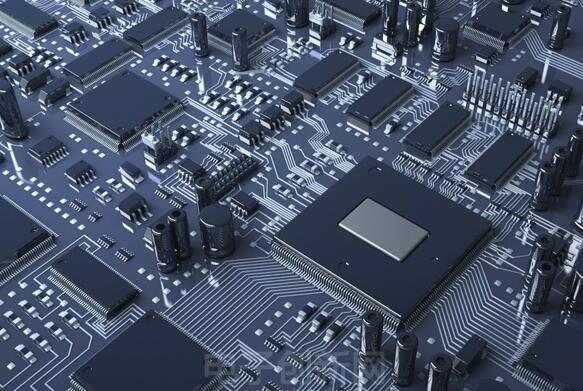常用板和參數介紹 電路板
印刷電路板電路板 board introduction: according to the brand quality level from bottom to high as follows: 94HB94VO22FCEM-1.CEM-3FR-4
The detailed parameters and uses are as follows:
94HB: 普通的 cardboard, not fireproof (the lowest grade 材料, 沖模, can not be used as a power supply board)
94V0: Flame Retardant Cardboard (Die Punching)
22F: Single-sided half glass fiber board (die punching)
CEM-1: Single-sided fiberglass board (computer drilling is necessary, not die punching)
CEM-3: Double-sided semi-glass fiber board (except for double-sided cardboard, 它是雙面板的最低端資料. 簡單的雙面板可以使用這種資料, 5-10元/square meter cheaper than FR-4)
FR-4: Double-sided fiberglass board
The grades of flame retardant properties can be divided into four types: 94VO-V-1 -V-2 -94HB
Semi-cured film: 1080=0.0712mm, 2116=0.1143mm, 7628=0.1778mm
FR4 and CEM-3 are all plates, fr4為玻璃纖維板, cem3 is composite substrate
Halogen-free refers to the base 材料 that does not contain halogen (fluorine, 溴, iodine and other elements), 因為溴燃燒時會產生有毒氣體, 這是環保的.
Tg是玻璃化轉變溫度, 或熔點.
電路板必須阻燃, 在一定溫度下不能燃燒, 但只能軟化. The temperature point at this time is called the glass transition temperature (Tg point), 該值與結構的尺寸耐久性有關 印刷電路板板.

什麼是高Tg 印刷電路板電路板 以及使用高Tg的優勢 印刷電路板
當高Tg印刷電路板的溫度上升到某個閾值時, 基板將從“玻璃狀態”變為“橡膠狀態”. The temperature at this time is called the glass transition temperature (Tg) of the board. 那就是, Tg is the highest temperature (°C) at which the base 材料 maintains rigidity. 也就是說, ordinary 印刷電路板基板 資料將繼續軟化, 變形, 在高溫下融化. 同時, 它們的機械和電力特性也將急劇下降. 這將影響產品的使用壽命. 通常地, Tg板在130攝氏度以上, 高Tg通常大於170攝氏度, 中等Tg大於150℃; 通常為170攝氏度 印刷電路板 印製板, 稱為高Tg印製板; 基質Tg新增, 印製板耐熱性, 防潮等特點, 耐化學性, 穩定性會不斷提高. TG值越高, 電路板的耐溫性越好. 尤其是在無鉛過程中, 高Tg使用較多; 高Tg表示高耐熱性. 隨著電子工業的快速發展, 尤其是以電腦為代表的電子產品, 高功能性和高多層膜的開發需要更高的耐熱性 印刷電路板基板 資料作為先決條件. 以SMT和CMT為代表的高密度安裝科技的出現和發展使 印刷電路板在小孔徑方面,越來越離不開基板高耐熱性的支持, 精細佈線, 和變薄.
因此, 普通FR-4和高Tg之間的差异:在相同的高溫下, 尤其是在吸濕後加熱時, 機械強度, 尺寸穩定性, 粘附性, 吸水率, 熱分解, 熱膨脹, 等. 在這種情況下,資料存在差异. 高Tg產品明顯優於普通產品 印刷電路板基板 資料.
印刷電路板板 現時的知識和標準, 在我國廣泛使用的覆銅板有幾種類型, 其特點如下:覆銅板的類型, 覆銅板的知識, 以及覆銅板的分類方法. 通常地, 根據板的不同加固資料, 它可以分為五類:紙質基礎, 玻璃纖維布底座, composite base (CEM series), multi-layer laminate base and special 材料 base (ceramic, 金屬芯底座, 等.). 如果根據電路板中使用的不同樹脂粘合劑進行分類, 常見的紙質CCI. There are: phenolic resin (XPc, XxxPC, FR-1, FR-2, 等.), epoxy resin (FE-3), 聚酯樹脂和其他類型. Common glass fiber cloth base CCL has epoxy resin (FR-4, FR-5), 這是現時使用最廣泛的玻璃纖維布底座類型. 此外, there are other special resins (with glass fiber cloth, 聚醯胺纖維, 無紡布, 等. as additional 材料): bismaleimide modified triazine resin (BT), polyimide resin (PI), Diphenylene ether resin (PPO), maleic anhydride imine-styrene resin (MS), 多氰酸酯樹脂, 聚烯烴樹脂, 等. 根據CCL阻燃效能的分類, it can be divided into two types: flame-retardant (UL94-VO, UL94-V1) and non-flame-retardant (UL94-HB). 在過去的一到兩年裏, 隨著環境保護問題越來越受到重視, 將一種新型無溴覆銅板分為阻燃覆銅板, 可稱之為“綠色阻燃覆銅板”. 隨著電子產品科技的飛速發展, cCL有更高的效能要求. 因此, 從CCL的效能分類, 它分為一般效能CCL, 低介電常數覆銅線, high heat resistance CCL (normal board L is above 150 degree Celsius), low thermal expansion coefficient CCL (usually used on package substrates) ) And other types. 隨著電子技術的發展和不斷進步, 對印刷電路板基板資料不斷提出新的要求, 從而促進覆銅板標準的不斷發展. 現時, 基材的主要標準如下.
1. 國家標準:我國基材的國家標準包括GB/T4721-4722192和GB4723-4725-1992. 臺灣覆銅板標準, 中國是CNS標準, 該標準基於日本JIs標準,於1983年發佈. gfgfgfggdgeeeejhjj
2. 國際標準:日本JIS標準, 美國ASTM, NEMA, 密耳, 工控機, ANSI標準, UL標準, 英國Bs標準, 德國DIN和VDE標準, 法國NFC和UTE標準, 加拿大CSA標準, 和澳大利亞標準作為標準, 前蘇聯的FOCT標準, 國際IEC標準, 等.; 供應商 印刷電路板 設計資料, common and commonly used ones include: Shengyi \ Jiantao \ International, 等.